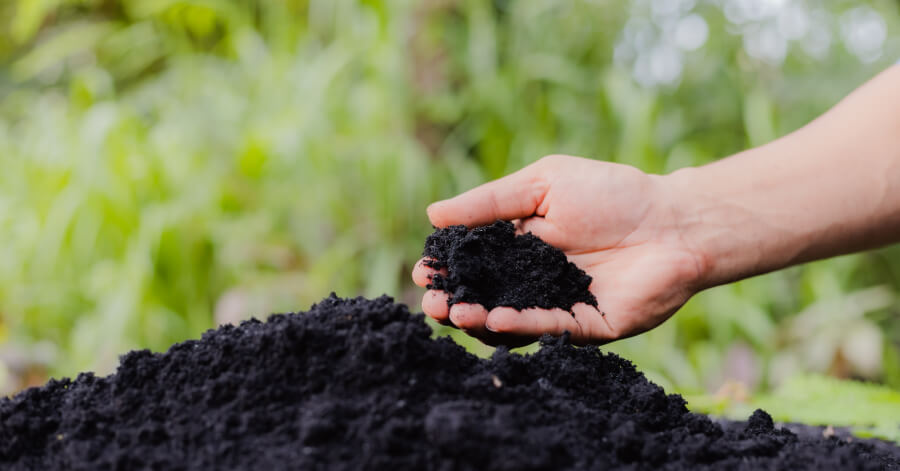Hyundai Motorstudio Senayan Park
Hyundai Motorstudio Senayan Park
Newsroom
The official news from Hyundai Motorstudio Senayan Park and a collection of innovative articles on mobility and sustainability here.
-
How to make compost from household waste
- Hyundai Motorstudio Senayan Park Senayan Park 2022.09.16
-
Basically, all organic materials will eventually rot and decompose on their own. However, with advances in technology we can make our own compost soil from household waste .
Moreover, there is a lot of household waste generated every day, right? Instead of just piling up, household waste can be processed into compost which is more economical and useful.
So, composted soil is the remains of organic matter that has undergone weathering, both naturally and man-made. If treated properly, composted soil also provides the benefits of a fertile environment, fast growing plants, and does not pollute water or soil conditions.
Interested in making your own compost soil at home? Follow the review below!
How to make compost from household waste
Household waste has the potential to be used as organic compost . Because, in addition to solving the problem of household waste, composted soil is safe for the environment and supports plant fertility.
However, before making compost, household waste should be sorted first between organic and non-organic. After that, let's follow the steps to make the following compost soil:
Materials provided:
- Organic waste can be in the form of leftover rice from last night, rotting fruit or vegetables, banana peels or herbal waste, and others that come from natural waste.
- Livestock manure such as cow manure, goat manure, chicken manure, and others.
- Sawdust.
- EM4 products or activators that play a role in accelerating the decomposition process of organisms so that waste can be quickly decomposed into compost.
- Enough water.
Equipment provided:
- Knife or cutting machine.
- Containers or buckets to collect trash.
- Mixer.
- Container for adding activator.
Ways of making:
- First, household waste needs to be chopped or cut into small pieces to speed up the reduction.
- Enter the inoculant in the form of sawdust, livestock manure, or finished compost, or ordinary soil.
- Add EM4 or activator with enough water to dissolve. Then, add it to the compost and mix until well combined.
- Slowly pour in the activator if the mixture still looks dry.
- Store in a container or bucket for composting.
- Close tightly and leave.
- After 1 week, stir the compost mixture to provide airflow or aeration.
- In the 7th or 8th week the composting is complete. And ready to use.
- If necessary, filter or sieve to remove dirt and make it smoother in texture.
- The characteristics of successful composting are blackish brown compost color, smooth texture, and no pungent smell.
Valuable Tips for Making Compost Soil
Compost is a soil fertilizer made from the weathering process of natural materials. Examples such as household waste or leftovers in the kitchen.
Although it looks easy, if you are not careful composting can fail. Follow these tips for successful composting:
1. Make holes in the compost bucket or container
Previously, make a small hole in the bottom of the compost bucket or container to absorb water.
2. Dried leaves
Don't forget to add dry leaves to the bucket and flatten, then compact. Dry leaves will speed up the composting process and increase the temperature in the container.
3. Enter organic waste
Once solid, then you can add organic waste, such as leftover vegetables, fruit peels, or leftover kitchen ingredients.
4. Use egg shells
Rarely realized, usually egg shells are just thrown away in the trash. You can use egg shells to speed up the composting process.
Simply crush the eggshell until smooth, then put it in a compost container. Then, add soil and compact.
5. Rice washing water
In the final stage of composting soil, flush the compost mixture with enough water. Let the water seep all the way to the bottom of the bucket or container. It is recommended to use used rice washing water to flush the compost mixture to make it more effective.
6. Wait a month
Close the compost container tightly and leave it for a month or about 7-8 weeks. If the compost soil has turned blackish brown, has no pungent odor, and is fine grained, it is a sign that it is ready to be used as a planting medium.
Benefits of Compost
Why do many people choose composted soil over chemical fertilizers? The answer is simple, because there are many benefits of using compost in plant cultivation.
Using compost soil means that you are helping to preserve the pH balance of the soil without destroying it. Microorganisms in the soil contribute to plant fertility.
Therefore, let's learn what are the advantages and benefits of the following compost soil:
- Being a source of macro mineral nutrients for plants, although the amounts are relatively minimal.
- Compost can improve pH in acidic soils in the long run.
- Provides the humus content needed by the soil to increase macro-nutrients and micro-minerals in the soil.
- Makes the soil texture easier to plant and loose.
- Increase the level of water absorption in the soil.
- Accelerate the development of soil microbes that support plant fertility.
- Prevent plant diseases.
In the modern era like now, technological developments and research related to compost soil are increasingly advanced. Materials and methods of making compost can be adjusted according to its function or purpose. Thus, modern agriculture can provide its own supply of organic fertilizers, without relying on chemical fertilizer factories.
We hope this information about materials and how to make compost from household waste was insightful. With compost from household waste, we can increase soil fertility and maintain environmental cleanliness.




